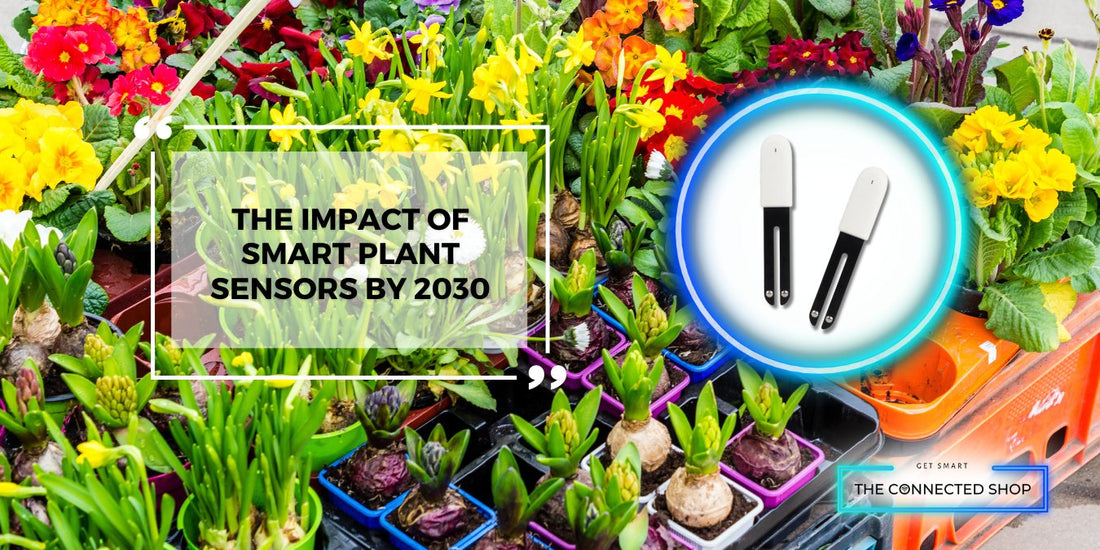As we move deeper into the age of smart technology, the possibilities for plant care are evolving in ways that were only imaginable. By 2030, smart plant sensors are set to transform green spaces, both indoors and out, offering unprecedented insights and automation. These innovations will go beyond simply measuring soil moisture or light levels—they’ll adapt to changing environments, predict plant needs, and seamlessly integrate into our daily routines. This post explores the exciting advancements on the horizon, from enhanced sensor precision and predictive analytics to eco-friendly power solutions, all geared toward empowering gardeners, homeowners, and green-thumbed enthusiasts to grow smarter, healthier plants with ease. Prepare to envision a future where nurturing your greenery becomes as effortless as checking an app.
Predictive Analytics and AI-Driven Insights for Proactive Plant Care
As smart technology advances, AI-driven smart plant sensors are expected to upgrade plant care by leveraging predictive analytics. Imagine a smart plant sensor that doesn’t just tell you when your plant needs water but can anticipate its future needs based on historical data and environmental trends. By 2030, these smart plant sensors will likely be equipped with AI algorithms capable of analyzing extensive data on variables such as sunlight, humidity, soil composition, and previous growth patterns. This data-driven approach allows smart plant sensors to identify patterns and predict potential issues before they arise.
With predictive analytics, these smart plant sensors can provide tailored recommendations, alerting users to subtle changes in plant health that might otherwise go unnoticed. For instance, if the smart plant sensor detects early signs of nutrient deficiency or a gradual decline in soil quality, it could notify users with actionable advice, such as adjusting the fertilization routine or switching to a different watering schedule. This level of precision enables proactive rather than reactive care, ensuring plants receive the right support exactly when needed.
In addition, as AI continues to evolve, smart plant sensors may soon be capable of autonomous adjustments. Integrated with automated irrigation and lighting systems, these smart plant sensors could automatically regulate water and light levels to maintain ideal conditions for plant growth. For urban gardeners and plant enthusiasts alike, AI-powered plant care means healthier plants with minimal effort, bringing plant maintenance one step closer to being a set-it-and-forget-it experience. By embracing predictive analytics, smart plant sensors will foster resilient green spaces, helping plants thrive in an increasingly unpredictable environment.
Advanced Plant Identification and Customization Features
One of the most exciting advancements in smart plant sensors by 2030 will be their ability to identify plant species automatically, opening the door to truly personalized plant care. Equipped with advanced image recognition technology and robust plant databases, future smart plant sensors will be able to recognize the exact species of plant they're monitoring. This identification feature will eliminate the need for users to manually input plant information, saving time and ensuring accuracy in care.
Once the smart plant sensor identifies the plant, it can tailor its monitoring and recommendations based on that plant’s unique needs. Every plant has distinct requirements for light, water, soil pH, and nutrient levels, which can vary significantly across species. With this technology, a sensor monitoring a succulent will adjust its water alerts differently than it would for a fern, ensuring that each plant receives care suited to its biology and environment.
Beyond basic needs, smart plant sensors could also offer seasonal care tips specific to each plant. For instance, they might remind users when to prune, repot, or provide extra nutrients at certain times of the year. Some advanced smart plant sensors may even be able to recommend optimal placements within a home or garden based on sunlight patterns, temperature, and humidity, further refining the care experience.
These advanced identification and customization features will empower even beginner plant enthusiasts to achieve healthy growth and longevity for their plants, transforming plant care into an accessible, personalized experience. With AI-driven customization, smart plant sensors are poised to become essential tools for gardeners, enabling them to cultivate thriving green spaces effortlessly, no matter their level of expertise.
Advanced Plant Identification and Customization Features
As climate change and urbanization reshape our environments, maintaining healthy plants requires adaptable and resilient care solutions. By 2030, smart plant sensors will play a critical role in helping gardeners and urban farmers navigate these challenges by providing real-time, location-based insights to optimize plant health in diverse settings.
For urban growers, where space and resources are often limited, smart plant sensors will help maximize efficiency by adjusting care recommendations to fit compact environments like balconies, rooftops, and indoor spaces. For instance, smart plant sensors will monitor factors like light availability in high-rise buildings, where natural sunlight can vary drastically. They’ll provide insights on optimal watering schedules and nutrient needs tailored to each specific urban environment, ensuring plants thrive even in less-than-ideal conditions.
In the face of shifting climate patterns, smart plant sensors will also offer proactive recommendations to help plants adapt to fluctuations in temperature, humidity, and rainfall. Equipped with predictive algorithms and climate data integration, these smart plant sensors can alert users to upcoming weather changes, such as heatwaves or unexpected frost. This feature will empower gardeners to take early action—perhaps by providing extra water during hot spells or protecting plants from cold snaps—safeguarding plant health against environmental stressors.
Additionally, as climate change brings new pest and disease risks, advanced smart plant sensors will be able to detect early signs of infestation or stress that may otherwise go unnoticed. By analyzing plant health data over time, smart plant sensors can identify irregular patterns and prompt users to take preventive measures, ultimately minimizing crop loss and ensuring sustainable growth in urban and rural spaces alike.
With the growing impact of climate change and urban living on plant health, the adaptive capabilities of smart sensors are becoming essential. These devices will empower both novice and experienced gardeners to make informed, sustainable choices, cultivating resilient green spaces that flourish in any environment.
Conclusion
As we look toward 2030, the potential for smart plant sensors to redefine plant care is nothing short of revolutionary. These devices will not only make gardening simpler but also empower us to cultivate resilient, thriving plants in a world of changing climates and urbanization. From predictive AI insights to species-specific care and environmental adaptation, the advancements in plant sensors promise a future where both seasoned gardeners and novices can effortlessly foster greener, healthier spaces. As technology continues to bridge the gap between nature and innovation, these intelligent tools will inspire us to grow smarter, transforming every corner of our environment into flourishing green havens.





